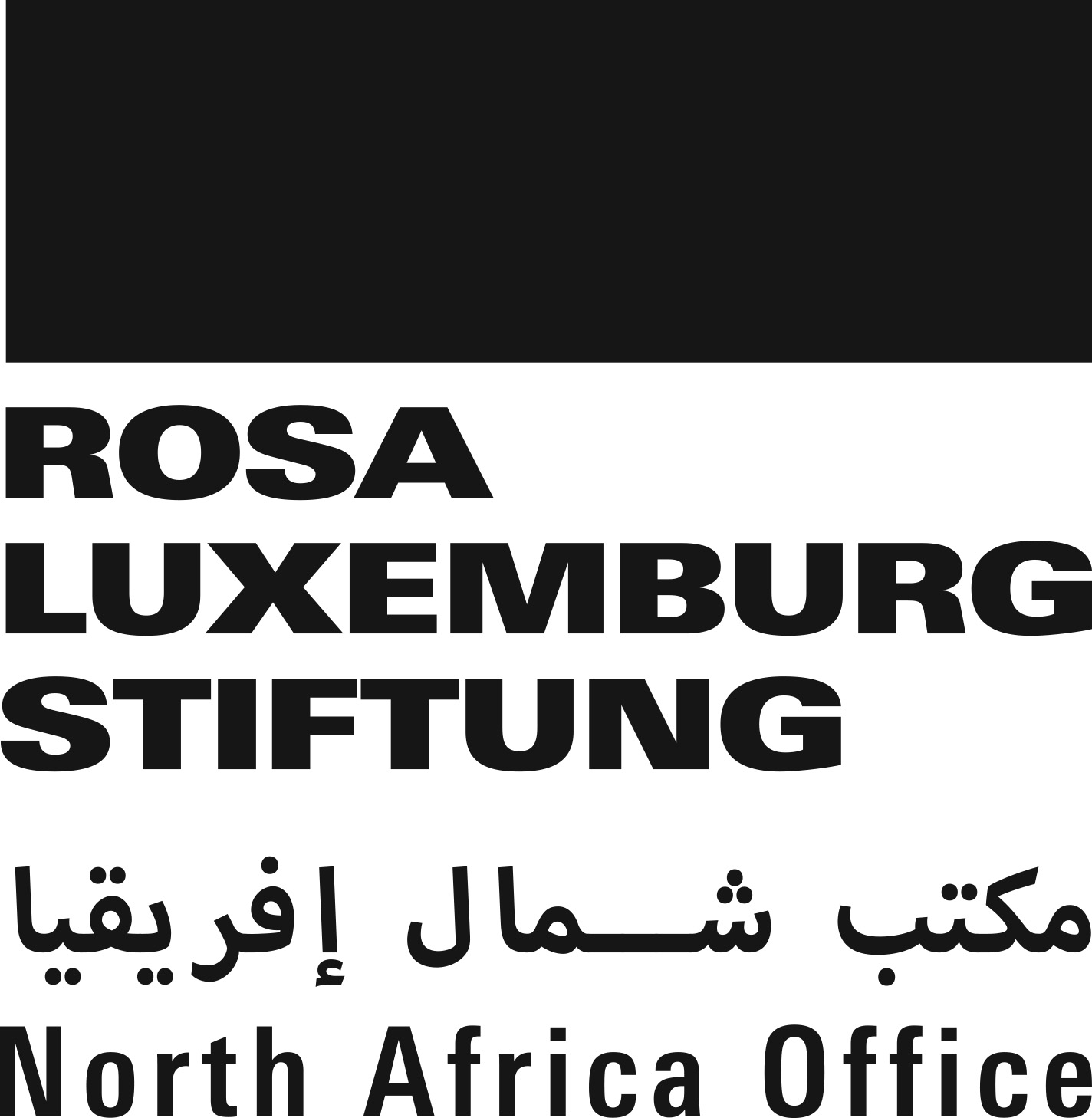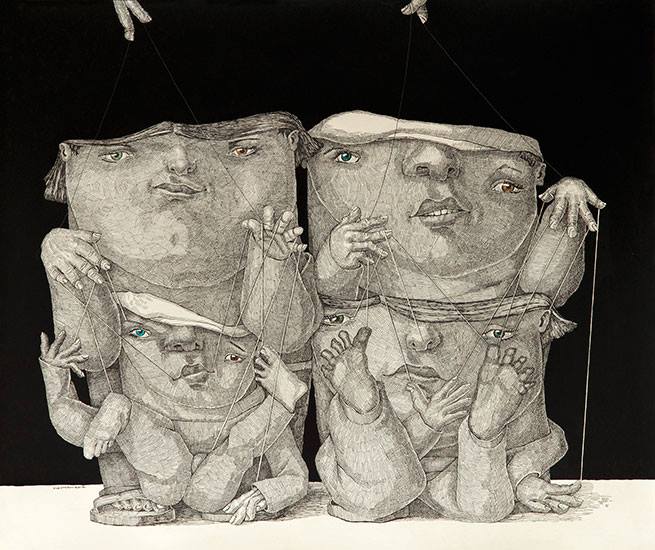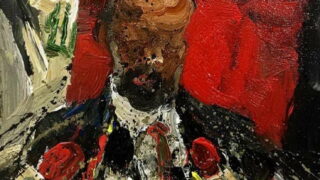
This publication has benefited from the support of the Rosa Luxemburg Foundation. This text may be reproduced in part or in full, provided the source is acknowledged.
The discrepancy in the estimates of the size of informal activities and the variety of the terms used to describe them in the media and political discourses (parallel, irregular, informal, etc.) are indicators of the complexity of the phenomenon. In the following text, I shall use the term "informal economy” due to its generic nature. The International Labor Organization (ILO) defines informal economy as “all economic activities by workers and economic units that are – in law or in practice – not covered or insufficiently covered by formal arrangements.” This definition includes the activities of the informal sector, carried out by unregulated economic institutions that do not qualify as legal entities. However, it also includes the activities of certain individuals within the formal sector itself, as in the case of the legally-founded companies that abstain from declaring their workers to the social security fund. In this sense, the term “informal economy” appears to be more precisely representative of these activities than the term “parallel economy”, which fails to take into account the intersections between the informal and formal economic activities (such as the domestic labor inside some registered economic units).
There is much proof of the importance of the informal economy in the Algerian economy. With the expansion of the "liberal reforms", and as the structural adjustment program was being implemented between 1994 and 1998, its importance peaked. Public companies were shut down (818 companies between 1994 and 1997, according to the Labor Inspectorate statistics), and there were mass layoffs of 405 thousand people from their jobs. Perhaps the most telling manifestation of the rise of informality is the vast difference between the official exchange rate of the Algerian dinar (114 dinars to the U.S. dollar) and the exchange rate in the "black market" (174 dinars to the U.S. dollar), with a 60-dinar difference between the two prices!
Scarce and Partial Data
Based on a study by university researcher Ahmed Heni published in 1994, the informal economy is structured in the form of networks, each headed by what can be considered “a real economic agent”, given the breadth of activities it supervises. These networks are capable of creating the structure of a genuine "counter-society”.
The Algerian authorities appear to be indifferent to a serious systematic assessment of this counter-society’s economy, even though the State launched initiatives aimed at integrating some of the informal economic activities. As a result, the data concerning the informal economy are very scarce and partial. The numbers are limited to those that can be deduced from statistics about the labor market, such as the surveys periodically conducted by the National Bureau of Statistics (NBS) and those published from time to time by trade union organizations (Traders’ Union, Employers’ Union, etc.), international bodies (the International Labor Organization) or included in academic studies, many of which are regional “case studies” which do not cover the whole country.
The systematic studying of the informal economy is a challenging task in any country, not just in Algeria, as noted by the International Labor Organization (ILO) and other international bodies. However, it is not entirely impossible, if the necessary means are provided. The conducted studies ought to typically set the ground for a comprehensive economic reform instead of a temporary and partial economic rehabilitation. In a manual entitled “Measurement of the Informal Economy”, published by experts of the ILO, it is stated that it is necessary to develop statistics that measure the magnitude and nature of the informal economy “as the basis for the formulation and evaluation of effective policies to support the transition to formality; as an advocacy tool for the population groups involved; in depicting global and national employment trends; and in analyzing linkages between growth and employment”.
Conflicting Estimates
Estimates of the size of the Algerian informal economy vary vastly. The former Prime Minister Abdelmalek Sellal, declared in March 2015 that the money supply within this economy was estimated to be 3700 billion dinars (40 billion dollars), while his successor Ahmed Ouyahia estimated it at 1700 billion dinars (18.5 billion dollars) in September 2017. The Finance Minister of the current government, Abdel-Rahman Rawya, is skeptical about the very possibility of measuring the informal economy. In early January 2018, he did not hesitate to contradict his own Prime Minister Ahmed Ouyahia, stating that all these estimates are but “media statements”.
In February 2018, the Central Bank governor, Mohamed Lokal, estimated the money supply in the informal economy to be somewhere between 2,500 and 3,000 billion dinars, halfway between the estimates of Sellal and those of Ouyahia. He also brought attention to another significant monetary supply located outside the banking system, comprised of 1500 to 2000 billion dinars of the savings of different economic actors, including domestic savings.
Many, from outside the governmental circles, are also calling for caution when considering statistics on the informal economy. The financial expert Farhat Ayet, although known for his fierce criticism of minister Ahmed Ouyahia, shares his perspective on the informal money supply. He agrees that Sellal’s assessment is highly exaggerated, and estimates that the informal money supply does not exceed 1,600 billion dinars, or 30 percent of the cash in coins and banknotes (one-third of the general cash supply), according to the latest figures in 2017 (i.e. 4700 billion dinars out of the total 14574 billion in the country).
The Central Bank estimated the money supply in the informal economy to be between 2,500 and 3,000 billion dinars, while bringing attention to another significant monetary supply located outside the banking system, comprised of 1500 to 2000 billion dinars of the savings of different economic actors, including domestic savings.
The conflicting estimates share two main traits. First, they are stated without explanation nor reference to their measurement tools, which makes them appear to be either purely intuitive or biased by the hidden desire to defend or undermine the government’s achievements. Second, they promote the idea that integrating the allegedly enormous informal money supply into the banking system can magically resolve all the problems of financing the national economy, especially after the decline in budget revenues since the collection of taxes on hydrocarbons fell in the summer of 2014. Contrastingly, the suspicions of some, in the government and the opposition alike, about the magnitude of the informal money supply are always combined with encouraging comprehensive reforms that would inevitably bring the informal economy to an end, as if it was nothing but a symptom of the economic crisis.
Some Aspects of the Informal Economy
Though outdated, the figures of The National Bureau of Statistics are still relevant in light of other evidence. These figures indicate that 50.4 percent of the population engaged in professional activity in the second half of 2009 (9.472.000 people) were not declared workers in the social security fund. This percentage rises to 69.1 percent among non-permanent workers and to 81.1 percent among freelancers or independent workers. Algerian researcher Yogurtha Blach notes that the current state of the informal labor market is part of a more global situation, steadily growing since the early 2000s, and affecting the workers from the most vulnerable social classes, such as the non-permanent wage earners and independent workers. According to Blach’s study, this expansion in informality could explain why the unemployment rates in Algeria have dropped from 29.7 percent in 2000 to 12.3 percent in 2017.
While the high percentage of informal labor in agriculture is not surprising (given the domestic nature of most agricultural work), the proliferation of informality in manufacturing industries (where production units have legal statuses) calls for reconsidering the extent to which the black labor market has penetrated the fabric of the formal economic sector.
A study by Ali Sawag, Philippe Idar and Nassereddine Hammouda, published in 2016 and based on data from the years 2001 to 2010, found that the informal Algerian labor force in 2010 was mainly distributed in the following sectors: 30 percent in the construction sector; 24 percent in trade, hotels and restaurants; 19.6 percent in agriculture and 13.2 percent in manufacturing. While the high percentage of informal labor in agriculture is not surprising (given the domestic nature of most agricultural work), the proliferation of informality in manufacturing industries (where production units have legal statuses) calls for reconsidering the extent to which the black labor market has penetrated the fabric of the formal economic sector. This study shows that in 2010, agriculture came in first place among economic activities regarding the ratio of informal workers to total workers in the sector, with 84.4 percent. It was followed by the construction sector with 77.8 percent, trade, hotels and restaurants with 71.3 percent, manufacturing with 63.6 percent, and transportation and communication with 49.9 percent.
The figures published by economist Abdelrahman Mebtoul in December 2015, citing the National Trade and Craftsmen Union, are sufficient to highlight the importance of informal activities in the trade sector. 80% percent of officially registered traders do not declare their non-permanent workers to the National Social Security Fund, 80 percent of commercial transactions are done without being invoiced, and 70 to 80 percent of transactions are paid in cash. According to other figures circulated in the media in September 2014, the number of weekly unauthorized markets is almost 1,500 and these employ about 100,000 people.
Besides the lack of social protection for the workers in these markets and the impossibility of controlling the quality of the goods, there are other issues that rise from their presence. The State’s treasury loses great revenues because of these markets, and according to Abdelrahman Mebtoul, the Algerian Traders Union has estimated the annual losses at about 3 billion dollars. The aforementioned union did not disclose the way in which it concluded this figure, but it does not seem to be a suspicious number, as the union has access to the necessary data for such an account (the average of the declared taxes, the number of traders nationwide, etc.).
Government Initiatives
The available (conflicting) figures on the size of the Algerian informal economy are all very high. The smallest of these figures estimates it to be worth 1600 billion dinars (17 billion dollars), which is equal to 1.5 times the Algerian trade deficit in 2017 - estimated at 11.19 billion dollars. The highest figure, 3700 billion dinars (40 billion dollars), exceeds the total value of Algerian imports in 2017 - estimated at about 46 billion dollars.
The Algerian authorities are trying to attract this money supply to the banking system through several initiatives whose efficiencies are difficult to measure. I mention here four of the most recent initiatives, overlooking the government’s suggestion to adopt Islamic banking systems in 1991, since these banks have failed, for over 26 years, to convince the owners of "informal capitals" to deposit their money in the banking sector. In fact, the refusal to invest in these banks has proven that the reason for dismissing the integration into the banking systems was not the “fear of God’s punishment” for practicing “Riba” (usury).
The first of these four initiatives was the mandatory use of financial instruments (checks) for all transactions that exceed a certain value. The initiative was approved in 2004 and 2011, but the government interrupted its implementation both times. There was another shy attempt in 2014 for imposing the use of checks in transactions of one million dinars (10 thousand dollars) and above, but it remains unclear how far this mandatory procedure was implemented on the ground.
The second initiative was launched in 2015, with the campaign to persuade the owners of the informal economic capitals to deposit in the banking system in exchange for paying a tax levy. This was not applicable to the money that had been gained from "illegal" activities, although these activities were not clearly defined (is cross-border smuggling illegal in the same way as drug trafficking is, for instance?). The concrete outcome of this campaign cannot be assessed, but in February 2018, the Finance Minister insisted - without much explanation - that "huge sums" had been deposited in the banks since the campaign had begun. Today, only one figure is available, stated by the Director General of the State’s Local Development Bank in November 2015, who declared that the initiative resulted in the deposit of 3 billion dinars in the banking system 3 months after its inception. The said number seems miniscule and insignificant when compared to the government’s estimates of 3700 billion dinars of informal money supply.
The refusal to place informal money in Islamic banks has proven that the reason for dismissing the integration into the banking systems was not the “fear of the God’s punishment” for practicing “Riba” (usury).
The third initiative was the sale of sizable public bonds in 2016 to finance public expenditure and investment. This was supposed to persuade part of the informal capital holders to safely invest their capitals for interest rates ranging from 5 percent to 5.75 percent, depending on the underwriting period (3 or 5 years). Eventually, the banks purchased a total of 158.9 billion dinars in bonds, which is under half of the total sum of sold bonds, according to the Central Bank. But what about the other half? Was it really (at least partially) “informal money” coming out of the shadow into the system? Perhaps it was. However, it is more likely that the government would not have hesitated to brag about it had the total sum of money been sizable, as a part of its regular habit of self-praise for its own achievements and the “achievements of Mister the President”.
In April 2018, the State’s fourth initiative to absorb the money of the informal economy was launched when the governor of the Central Bank instructed all banks to establish a line between their main task; i.e. the collection of financial resources, and the task of gathering financial intelligence, which is a matter assigned by the law to other official bodies. This instruction was clearly intended to inhibit some banks from “excessively preventing money-laundry”, in the governor’s words.
Can Transparency Be Partial?
These initiatives raise some serious questions about the sincerity of the government's intention to maintain economic transparency when, in reality, the entire economy is conducted in an ambiguous way. There is evidence of this ambiguity in everything, from the unreliability of many published statistics to the existence of a “black market for economic decision-making”. It is no secret that sometimes the finances granted by a State bank (most banks in Algeria are State banks) are not the product of the bank’s free and sovereign will. The decisions to grant financing to a big investor or to an unemployed person from a youth employment program could equally be the result of a direct order from one of the (many) invisible powerful "decision-makers”.
On the other hand, we have established that these initiatives are centered around attracting money supplies that circulate in the informal economy towards banks to provide additional liquidity that would be able to finance the economy at a time when its fiscal resources are exhausted. But, what about illegal forms of work such as employment without declaring to social security or limited-term contracts that are renewed periodically, even though the law requires them to become permanent contracts after a certain period? Regulating the labor market, to say the least, is not one of the State’s priorities. On the contrary, ever since the treasury resources declined in the summer of 2014, the State’s discourse has insisted on more “flexibility” and competition in this market. Additionally, concerning the elimination of illegal trade, the initiatives are few, improvised and always factored by critical political circumstances. That was obviously the case in 2011, when the decision to impose transactions exclusively though legal instruments was suspended in the wake of the "Arab Spring", in fear that the protests of young people in some neighborhoods of Algiers would develop into an uprising similar to the Tunisian one.
This tolerance of some aspects of the informal economy indicates two important things. First, this "secret economy" has acted as both an instantaneous and dangerous solution, exploited by political regimes to mitigate the social impact of crises resulting from their own liberal policies. The informal economy in Algeria was the child of the financial crisis that followed the decline of the country's external resources due to the oil counter-shock of 1985-1986. Second, the suppression of certain aspects of the informal economy, such as violations of the labor law, means monitoring private sector activity. It is something the government is clearly not willing to put on stake, encouraged by international financial institutions to facilitate the investments and expansion of the private sector, and hereby allowing it to have the upper hand over the public sector.
The content of this publication is the sole responsibility of Assafir Al-Arabi and Rosa Luxemburg Foundation cannot accept any liability for it.
Translated from Arabic by Sabah Jalloul
Published in Assafir Al-Arabi on 20/05/2018







